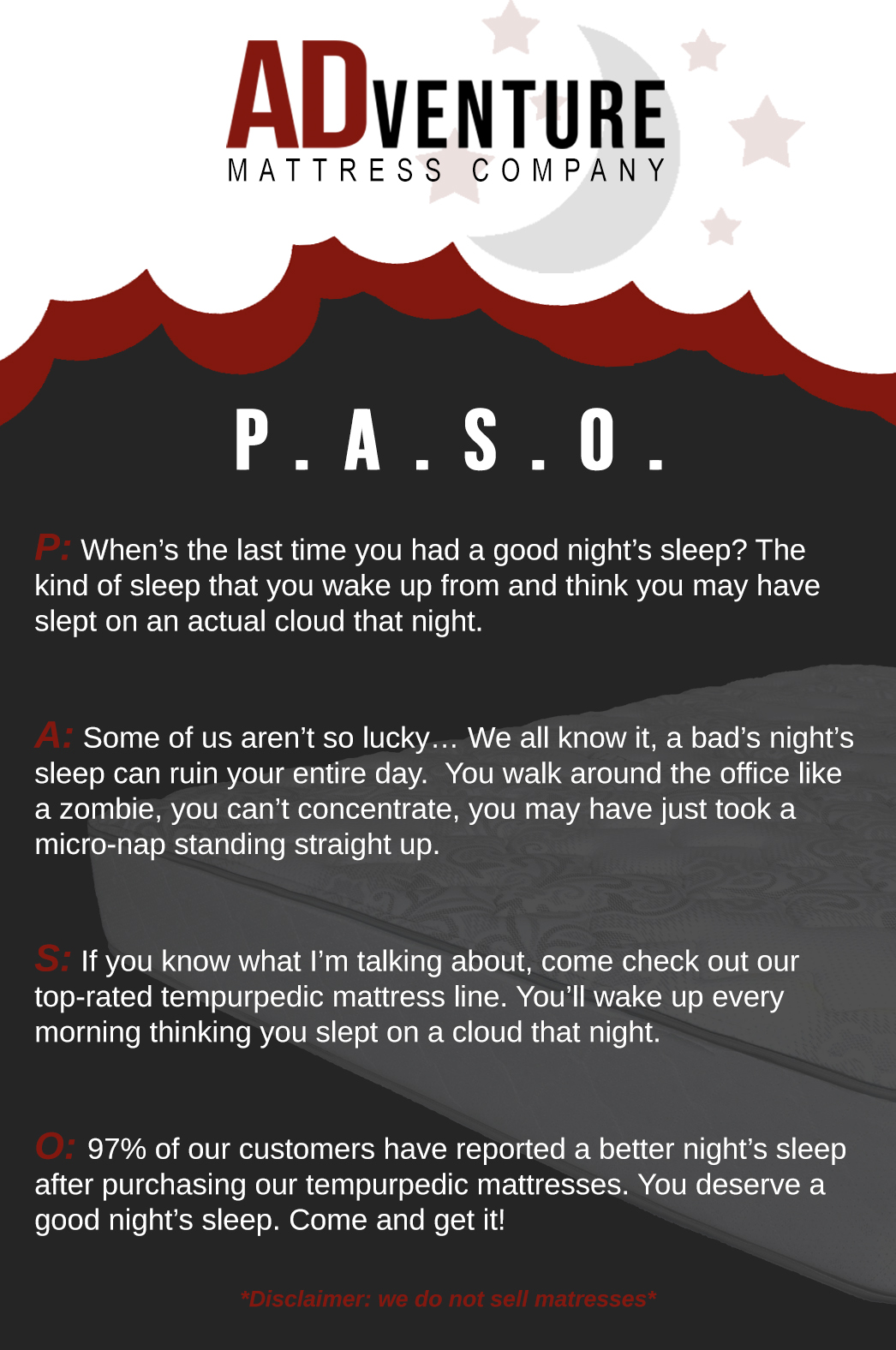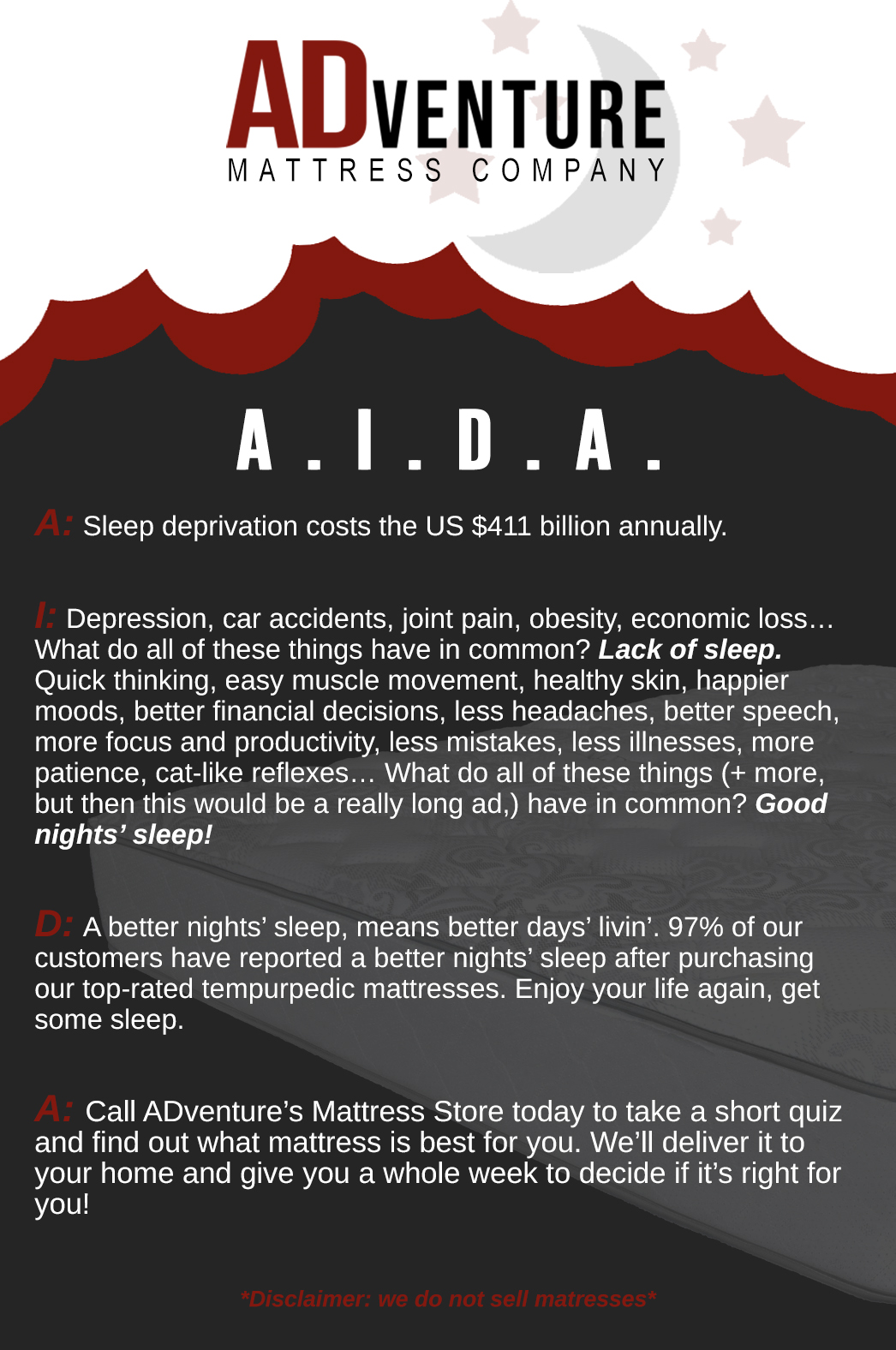Copywriting is the art of writing the words that are on billboards, magazine ads, commercials, podcast scripts, emails… the list can go on and on. In a nutshell, it’s the text that you read and/or hear in any form of marketing or advertising material.
Copy will make or break your marketing efforts. Good copy informs and instructs your audience to take specific action. Bad copy goes unnoticed, or worse, confuses the reader.
In this blog post, I’m going to give you my number one copywriting tip. You’ll be on your way to better copy, faster writing and more conversions.
Tip: Don’t write from scratch. Yup, read that again.
Writing from scratch is a huge waste of time. Your writing will be unorganized (hello, rabbit holes), your message will be unclear and your audience won’t waste their time trying to figure it out. Don’t write from scratch.
Instead, use a copywriting formula as your starting point. A formula will help organize your thoughts into words and deliver your message in a persuasive way. Not only does a formula give your writing structure, but it also will help you write faster!
If you search the web for copywriting formulas, you’ll find a million! The honest truth is that most of these formulas are variations of a few core copywriting formulas. You only need to learn one or two. Find which formula(s) you like best and write away!
Copywriting Formula 1
PAS/PASO
Problem
Present the problem to your audience. Show them that you know how it feels to have this problem. The more you can vividly write about the pain, the more your audience believes that you know how it feels. The more camaraderie they feel, the more trust you build.
Agitate
Keep poking at the problem. Pour salt on the wound, add fuel to the fire, twist the knife… But not too much. Bring emotion to the table, but don’t over do it. The point here is to keep building camaraderie and trust with your target audience. Prove to them that you know how they feel and aha… You’ve found a solution.

Solve
This is where you, your product, your service, makes everything better. You have the solution to their problem.
By using this formula, you’re focusing on the major pain-point of your target audience. You’re telling them, “I hear you, I understand you, I can help you.” Empathy is incredibly powerful.
Although this traditional copywriting formula is effective in itself, there is one additional element that takes it to the next level. Outcome.
Outcome (optional)
The addition of providing an outcome to your audience, shows them the proof in the pudding. It provides your audience with proof that your solution is the remedy they need.

Copywriting Formula 2
AIDA
Attention
Grab their attention. This can be done through a headline, video, or hero. You could report on a crazy insight that you discovered through your target market research. This step is meant to create awareness and attract attention.
Interest
Now that you’ve got their attention, you need to keep it. Give them a reason to keep reading. This is a great place to pull a page out of PASO. Start talking about the audiences’ ‘problem.’ Make it personal, make them feel the issue. Empathize with your target audience.
Desire
Once your audience is interested, hit them with why your product/service solves their problem. This is a great spot to present the benefits of your product/service. Why do they need what you’re selling? Why do they want what you’re selling? How will it make their lives better?
Action
The good ‘ole CTA. When you’ve provided enough “proof” of desire to your audience, you can’t leave them hanging. Tell them how to get it! Fulfill their desires. Make it easy for them to purchase what you’re offering. Include call buttons, buy buttons, fill forms, etc. Whatever you’re offering, make it as easy as possible for your audience to get.
The difference between interest and desire:
These two are often confused in marketing and advertising. Think about it this way:
Interest is making your audience realize that this is something they need. Their lives are missing something without this product/service.
Desire is making your audience want your brand, not a competitor. Do this by using facts/figures to back up why your product/service is better than the rest. Emotionally-driven content works best for this.

Additional Copywriting Tips
Copywriting formulas might seem like magic, but they aren’t. There are no guarantees that using these formulas will make you more sales. However, when you’re staring at a blank page with a deadline looming overhead, these formulas can be a good starting point. Once your copy is complete, you can also use them as a checklist to be sure that you’ve covered all major points of your message.
Here are a few more copywriting tips, to give you an extra push.
Do More Research
Research the heck out of your topic. Research more than you write. Gary Bencivenga, a legendary copywriter and student of the great David Oglivy, drives this point home.
Write for your target audience
The most important tip/suggestion/you-need-to-do-this, is to research your target audience. Know them, become one with them. Once you’ve got a good understanding of your target audience, create a target persona. This is one person, we can call her Karen, who needs your product. Every word you write, is to Karen. This mindset will help you keep your copywriting personal and on point.
This is perhaps the most important part of marketing and advertising as a whole. Without a deep understanding of your audience, your marketing efforts don’t mean a thing.
You can create the best advertisement for bacon that this world has ever seen, but if your ad is being seen by only vegetarians, you won’t sell any bacon! You must know who your audience is.
Use Style Elements

Using style elements will help readers absorb the message you are giving. Beyond the style elements of literary writing, which outlines specific word choice, detail, diction; Use style elements that deliver through the web. Use headings in your writing, emphasize words or phrases with bold or italics, and utilize bullet points for lists. Any information that can be transformed into a visual element, do it.
We hope that this guide of tips and tricks is useful to you. For more help in crafting copy material for your marketing and advertising efforts, contact ADventure Marketing.


